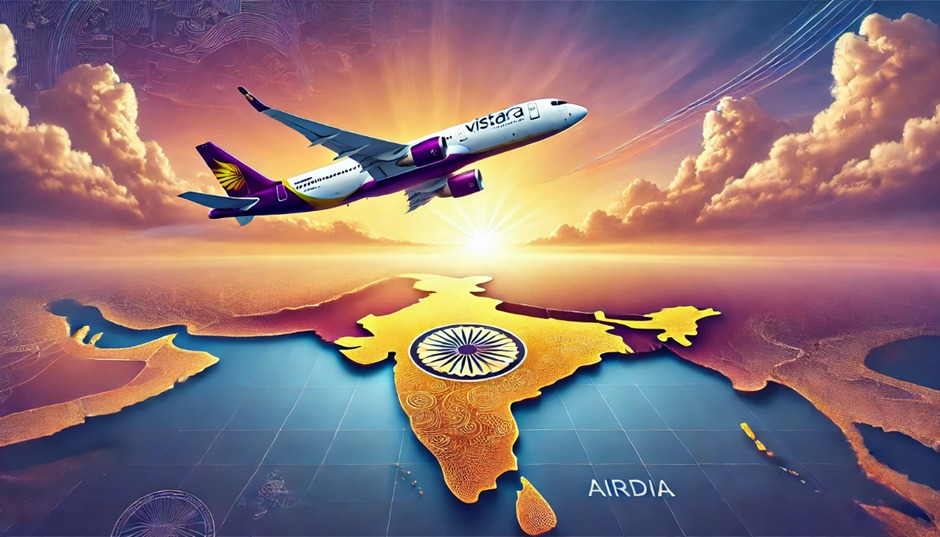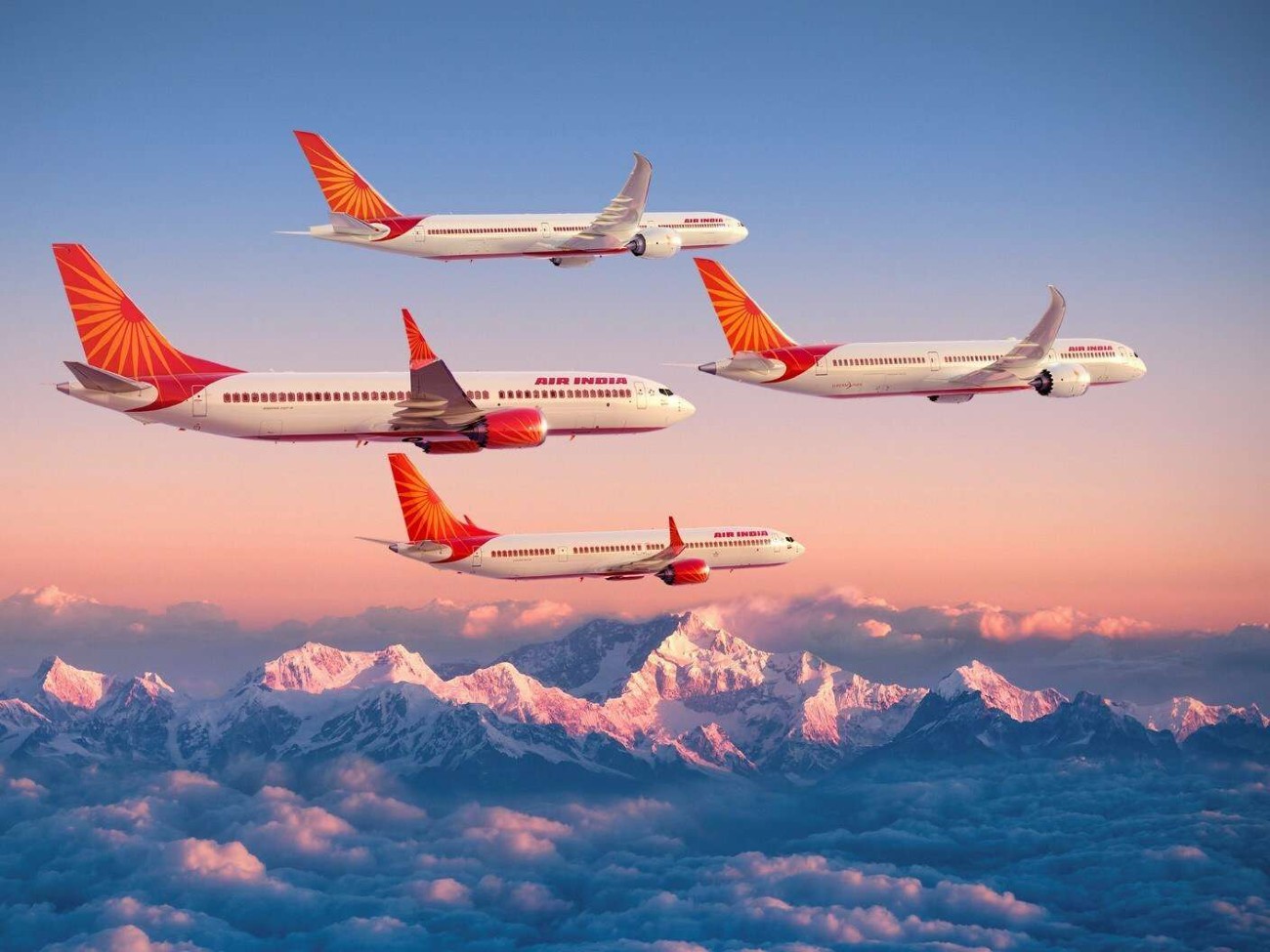When Vistara first took to the skies in January 2015, it carried with it more than just passengers—it carried the aspirations and dreams of an airline born from the joint venture of Tata Sons and Singapore Airlines, two titans of industry known for their dedication to excellence and innovation.
This wasn’t just another airline launch; it was a grand declaration of refined Indian luxury seamlessly intertwined with global aviation expertise, setting new benchmarks in service and quality.
With Tata’s illustrious legacy in Indian aviation, harking back to J.R.D. Tata’s pioneering flights and unmatched vision, and Singapore Airlines’ reputation for superior service and precision, Vistara embodied a confluence of heritage and modernity.
It was a testament to what happens when tradition meets world-class standards—an airline that aimed to blend the warmth of Indian hospitality with the sophistication of international aviation.
As we bid adieu to Vistara, it is only fitting to look back on this unique journey, marked by unwavering ambition, an unmistakable charm, and a sprinkle of nostalgia that tugs at the heartstrings of those who experienced it.
Vistara wasn’t just another name in the Indian skies; it was a symbol of aspiration, the embodiment of an Indian touch that set it apart from its competitors—a touch as distinct and rich as the scent of freshly brewed chai on a rainy day.
The Birth of Vistara: The Maharaja’s Modern Cousin
Back when the Tata Group announced Vistara, aviation enthusiasts could almost hear a collective “Finally!” Tata’s deep-seated relationship with aviation, tracing back to J.R.D. Tata’s pioneering flights, met with Singapore Airlines’ technical excellence.
Vistara emerged as the embodiment of this union—a modern cousin to Air India’s old-school Maharaja but with a dash of youthful energy and fresh perspective.
Vistara promised a unique flying experience that stood between the minimalist economy class and the almost unattainable luxury of business class.
In an era when no-frills carriers dominated the skies, Vistara brought a whiff of saffron-scented change. It targeted an emerging middle class, an audience ready to embrace luxury without feeling ostentatious.
Enter the concept of Premium Economy, a class as nuanced as an Indian masala blend—rich, multi-layered, and precisely what the market needed.

The Golden Era: Mid-Flight Elegance & Comfort
Vistara’s attention to detail was as intricate as a well-prepared biryani. Boarding a Vistara flight was like entering a space where tradition met innovation. From the soft, plush seats in Premium Economy to the hearty, well-spiced inflight meals that reminded travelers of home (a touch of paneer masala or an aroma that whispered “home-cooked meal”), every detail was curated to redefine comfort.
The crew, clad in elegant aubergine and gold, welcomed passengers with authentically warm smiles—a gesture reminiscent of being welcomed with a steaming cup of chai on a rainy evening in India.
The airline’s tagline, “Fly the new feeling,” wasn’t just a slogan; it resonated in every mile flown. Vistara carved its niche by ensuring that flyers experienced comfort akin to being upgraded to first class in spirit, even if they weren’t in a business-class seat.
Challenges In Indian Skies: The Monsoon Of Woes
But like any Bollywood saga worth its salt, Vistara’s journey wasn’t without its stormy monsoons. The Indian aviation industry, notorious for its razor-thin margins and cutthroat competition, put immense pressure on Vistara’s model. While the airline was a crowd-pleaser, with business travelers singing praises of its Premium Economy, the financial skies weren’t always clear.
Rising fuel prices, aggressive competition, and the aftereffects of global economic disruptions, like the COVID-19 pandemic, added turbulent winds. Despite all these challenges, Vistara did what any true Indian would do when the going got tough—it pulled out the age-old resilience, spiced with a mix of innovation and “jugaad” (ingenuity).
The People’s Airline: A Middle-Class Maharaja
Vistara wasn’t just another airline; it was the choice of a discerning Indian traveler looking for that sweet spot between extravagance and economy. It was for the businessman who wanted to kick off his shoes after closing a deal in Bengaluru and sip on hot masala chai at 39,000 feet.
It was for the young techie who wanted an extra few inches of legroom while binge-watching her favorite series en route to Hyderabad. It was for families who wanted to arrive refreshed for a wedding, the aroma of biryani still fresh in their memories.
And who could forget the inflight announcements sprinkled with polite Indianisms that made us chuckle—“Kindly adjust” and the heartfelt Jai Hind as the plane touched down?
Vistara knew it wasn’t just about reaching Point B; it was about making the journey from Point A to Point B feel like an experience worth talking about at the next Sunday brunch.

The End Of An Era: Mergers & Market Realities
As the curtains draw on Vistara’s story, it’s hard not to feel that familiar lump in the throat—the one that comes with the closing chapter of a favorite book or the last scene of a movie where the hero bows out. The decision to merge with Air India marks not just the end of Vistara but a significant shift in the Indian aviation landscape.
The Tata Group’s strategy to consolidate under the Air India banner makes economic and operational sense. But for loyalists who felt a certain pride in seeing the purple-and-gold livery line up on the tarmac, it’s a bittersweet symphony.
Vistara’s Premium Economy class—the heartthrob of mid-tier travelers—might fade into history, leaving behind memories and stories told over cups of chai, punctuated by exclamations of, “Remember when we flew Vistara?”
Legacy & Lessons: The Saffron Mark In The Sky
Vistara’s legacy goes beyond its pioneering Premium Economy. It showcased that Indians are ready for a nuanced travel experience that straddles luxury and affordability. It reminded airlines that service matters and that passengers notice the difference between a perfunctory smile and a genuine one.
As Air India shifts gears to a more consolidated airline landscape, the Vistara experience will linger like the lingering scent of freshly ground garam masala from Kerala. This leaves a lesson for the Indian market—luxury doesn’t always have to be grand; sometimes, it’s found in the little details that make a journey memorable.
So, the next time you book a flight and see a seat labeled “Premium,” remember that Vistara set that standard. Remember the times you reclined back, feet up, with a warm blanket and a hearty Indian meal, cruising at 39,000 feet.
Even as it merges into Air India, Vistara will forever be that splash of saffron in the skies, a reminder that once there was an airline that understood the middle-class Maharaja in all of us.
- Group Capt MJ Augustine Vinod VSM (R) is COO, AutoMicroUAS. The views expressed in the above piece are personal and solely those of the author. They do not necessarily reflect the EurAsian Times’ views.
- He tweets at @mjavinod




